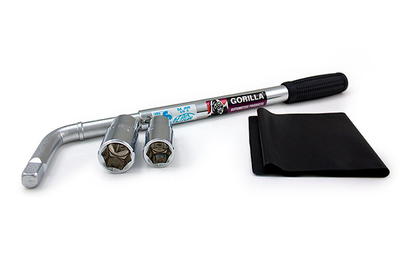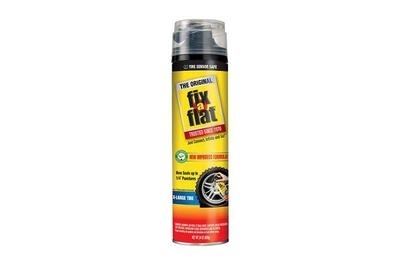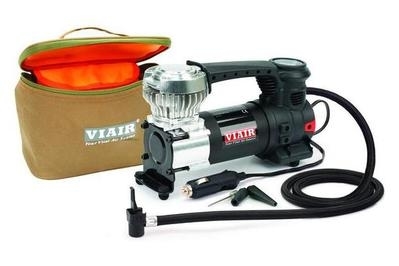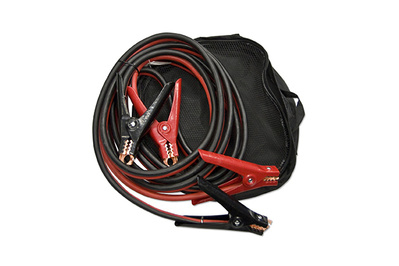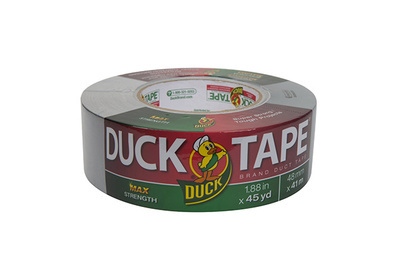The Best Gear for a Roadside Emergency in 2025
Frequently checking tire pressure and oil levels will help you anticipate and hopefully abate the typical hiccups that might sideline your road trip or daily commute. Still, when a flat tire, dead battery, or disconnected radiator hose crops up, having the basic necessities (and the occasional helpful gadget) can get you back on the road quicker than waiting for AAA to arrive. We’ve tested and selected some crucial items that will come through when you need them most.
Tire-pressure gauge

Top pick
The risk of underinflated tires creeps up on you, unnoticed. If you let the problem go too long, it can sideline you without warning, with a flat tire or a blowout. And in the meantime, it can hurt your fuel economy, hasten the wear on your tires, and make your car’s handling unpredictable and dangerous, particularly if you have to swerve to dodge something in the road.
You can avoid all that by checking the pressure of your tires (including the spare) regularly; we recommend doing so at least once a month. And a good tire-pressure gauge makes the task quick and easy.
We asked three tire shops which gauge they used, and all of them pointed us to the Accu-Gage RRA60X. After our testing, which included road-tripping with the tool ourselves, the Accu-Gage has emerged as our favorite tire gauge for several years running. It’s accurate and durable, and unlike a digital gauge, it has no battery to wear out.
The Accu-Gage is available in several different configurations, but the performance is largely the same. We prefer a version with a hose attached and a straight chuck because that design makes it easier to hold the gauge and check the tire pressure at the same time. Our favorite version even has a removable rubber bumper in case you drop the gauge.
Scissor jack
Top pick
Most cars come with jacks for changing a flat tire, but typically they’re designed for occasional use at best, with an emphasis on saving space and weight instead of ensuring capability and ease of use. But if you find yourself stuck in, say, soft ground on a dark and stormy night, or on an uneven surface in the middle of nowhere, you’re better off with something more substantial. And a high-quality scissor jack is a much better bet than an inferior one that can bend or collapse and cause injury.
We looked at more than two dozen scissor jacks and found that the Torin T10152 Scissor Jack stands out as the best choice. The best-selling scissor jack available on Amazon when we did our testing, it weighs 7.7 pounds, so it’s considerably beefier than competing jacks like the Powerbuilt 640819 Mechanical Scissor Jack. Its 1.5-ton capacity is heftier than that of other models we looked at, and more than the weight of many cars, so lifting one corner of your car to change a tire will be no problem.
Also important for safety is the 4.5-by-6-inch base, which is larger than the bases of many of the competitors in our comparison. That really helps to increase stability and spread the load in the soft stuff. Although this jack rises to a maximum height of 15.4 inches, it stands just 3.7 inches tall when collapsed. The Torin also includes a long handle for better leverage and ease of use.
Before using any jack, be sure to read the instructions in the car’s owner’s manual to find the recommended contact point on the vehicle for using a jack. Lifting in the wrong place can damage the car and possibly cause the jack to slip, creating a safety hazard. Make sure the car’s wheels can’t roll by putting an automatic transmission in Park (or shifting a manual transmission into a gear) and applying the emergency brake. Also, make sure the jack’s base is on a flat surface and that the jack stays vertical as you’re lifting the car; a jack that leans can easily slip.
Lug wrench
As if getting stuck with a flat tire weren’t bad enough, removing stubborn lug nuts with the chintzy wrench included with most cars can be nigh on impossible, particularly if they’re rusted on or if they were installed by an overzealous mechanic with an air wrench. One way to make your life easier is to use the Gorilla Automotive 1721 Telescoping Power Wrench.
Made of hardened steel, the Gorilla stands apart from other aftermarket wrenches we looked at (as well as the kind that comes with a car) thanks to one key feature: a telescoping handle that extends to a whopping 22 inches long. That length gives you better leverage for loosening stubborn nuts, and it can make the difference between being stranded and getting yourself back on the road. It then shrinks to just 14 inches for storage.
The Gorilla has two double-edged, ½-inch-drive sockets to fit all four common lug-nut sizes, and it comes with a handy storage bag to keep everything organized and clean. Overall, the Gorilla is likely to be a better bet in an emergency than the wrench rattling around in your trunk. Just make sure to also carry a flathead screwdriver to remove hubcaps (if your car has them).
Foam tire sealant
Top pick
An aerosol can of sealant won’t fix every flat tire, but it will get you out of a jam if you run over a nail, or at least let you drive to get help or reach a safer place to put on your spare. And using sealant is easier and quicker than changing a tire, a real boon in some situations. The best product for the job is the ubiquitous Fix-A-Flat. Just screw the built-in hose onto a tire’s valve stem and pull the trigger, and Fix-a-Flat dispenses a mix of sealant and air to inflate your tire. Also note that this product won’t completely inflate the tire, so your best bet is to top it off with air from another source as soon as possible. And don’t drive more than 100 miles—the shorter distance, the better—without either getting a permanent repair or replacing the tire. The 16-ounce size is designed for most cars; a 24-ounce can is available for larger pickups and SUVs.
Tire inflator
All tires lose air pressure, whether quickly due to a leak or a drop in ambient air temperature or slowly due to the normal seepage of air through the tire’s rubber. Underinflated tires can be a safety risk by making your car handle poorly, making it harder for you to keep control of the car when swerving to avoid an obstacle in the road, or causing a tire to fail (and possibly blow out) due to overheating. Underinflated tires also use more energy, which hurts your car’s fuel economy. Having a small air compressor in your car to inflate the tires is the quickest and easiest way to set them right.
Though our two top picks for tire inflators from Viair have been discontinued, we continue to recommend the Viair 84P as a flexible model for both standard and large tire sizes. The 84P plugs into your car’s 12-volt outlet (aka cigarette lighter) for power, so it’s convenient to use on the road. Its handy carrying case make it easy to stow in a vehicle’s trunk or cargo compartment, and the stronger motor makes it a quicker model than most (even for larger tires). During long-term testing of Viair models over the past three years, they have consistently performed well, and we’ve appreciated their quick performance, especially when a slow leak is crying for attention during a busy commute.
Portable jump starter
A portable jump starter is essentially a lightweight battery attached to two jumper cables that you use to jump-start your car. It’s easier, safer, and less intimidating than old-fashioned jumper cables that you attach to another car—and it’s something you can use if you’re alone, instead of waiting for roadside service/a kind stranger/a friend/a relative to show up and bail you out.
Staff pick
Wirecutter has recommended Weego gear since we first published our guide to portable jump starters in 2017. Guide writer Mark Smirniotis researched 40 lithium-ion jump starters and tested 12. Two Weego portable jump starters (both of which are now discontinued) became picks: the Weego 22s (the top pick; about $60) and the Weego 44 (the upgrade pick; about $150). Though we no longer maintain that full guide, many of us at Wirecutter still keep a Weego jump starter in our cars. But now, in many cases, it’s an updated version, namely the affordable Weego 44s, which hovers around the same price as the 22s model, its less powerful predecessor.
Measuring 5.62 by 3.44 by 1.04 inches (LWD), the Weego 44s jump starter is about the same size as a cell phone in length and width. It also weighs less than a pound (around 12 ounces, according to my kitchen scale) and has safety features that help prevent you from hurting your car or yourself: If you incorrectly attach the jump starter to your battery (which can potentially damage the battery or your car’s electrical system), the unit’s reverse-polarity protection feature activates, issuing a red light and an alarm alerting you not to proceed.
The Weego 44s is rated to work with a wide range of vehicles, including gas engines up to 7 liters and diesel engines up to 3.5 liters. It can jump-start pretty much any gas- or diesel-powered passenger-vehicle engine—anything from a Mini Cooper (2 liters or less) to a Dodge Ram (as much as 6.7 liters)—and it fits that power into a package that’s small enough for most glove boxes.
The Weego 44s comes partially charged out of the box and takes about 2.5 hours to charge from zero. A USB-A–to–Micro-USB charging cord is included, but it doesn’t come with a charging cube, so you need to plug the USB-A end into your own USB phone charger that works in regular household outlets or use an outlet with a USB-A port. According to the company, the unit can stay charged for more than a year in storage, though you should make sure to top it off every three to six months. With regular use, it’s rated to last for about three to five years or up to 1,000 recharge cycles. Plus, it can provide multiple jumps before it needs a recharge itself (five lights on the side of the unit indicate its remaining battery life).
The Weego 44s has checks and balances to ensure that you safely jump-start a car, but its lithium-ion polymer battery comes with certain caveats. Though the manufacturer indicates that the unit will operate in temps of -4 °F to 140 °F, leaving it in a car in extremely hot or cold conditions is not a great idea. “Most devices that contain a lithium-ion battery, whether it’s your smartphone or a portable jump starter, should not spend long periods of time in extreme temperatures since it can cause permanent damage to the battery,” says Wirecutter senior staff writer and battery expert Sarah Witman. “You should also keep in mind that car engines need more power to get started in freezing temperatures, so it’s especially important to keep your jump starter fully charged when driving in cold climates.”
Jumper cables
If you’re a die-hard jumper-cable partisan, make sure that the cables you get are long enough for most scenarios and thick enough to carry sufficient current to jump most vehicles.
Top pick
All it takes is leaving the headlights, or even an interior light, on when you park, and you may return to a dead battery. When that happens, typically the quickest way to get going is to have a solid set of cables that are long enough to reach a Good Samaritan’s battery and thick enough to carry sufficient current to start your car. After scrutinizing the specs of dozens of sets and having an electrical engineer analyze three top-rated models, we’d buy the Lifeline AAA Heavy Duty 16-foot 6 Gauge Booster Cables.
A thicker cable handles current more efficiently than a thin cable, and the AAA 6-gauge cables are both long enough and thick enough for most situations. Their 400-amp current rating means they can handle most vehicles (even trucks and SUVs). They also come with a sturdy and convenient mesh storage bag.

What really makes the AAA jumper cables stand out over all the others we tested is its clamps, which are especially easy to use and well designed and constructed. They attach easily to conventional, top-mount car-battery posts and include a small extension for attaching to the smaller posts found on side-terminal batteries. If you’re unfamiliar with how to use jumper cables, familiarize yourself. Lest you forget, AAA includes a handy diagram in the bag.
Duct tape
Top pick
As any MacGyver fan will tell you, duct tape is an indispensable tool. We tested the hell out of 10 rolls of duct tape and chose Duck Max Strength above the competition for its perfect blend of attributes: high material strength, a strong adhesive, and superior overall flexibility, which makes it easy to wrap around odd shapes and curved surfaces. It also tears in a nice, straight line and lends itself to short-term roadside repairs on your gear, as well as on the interior and exterior of your car.
We’ve used duct tape for everything from an emergency short-term patch on a radiator hose to a quick reattaching of loose wires and wayward bits of trim. Although it isn’t a permanent fix, it might get you home, or at least to a mechanic or to a safer place to make repairs. Duct tape can even handle first-aid duties when the right materials for the job aren’t available.



